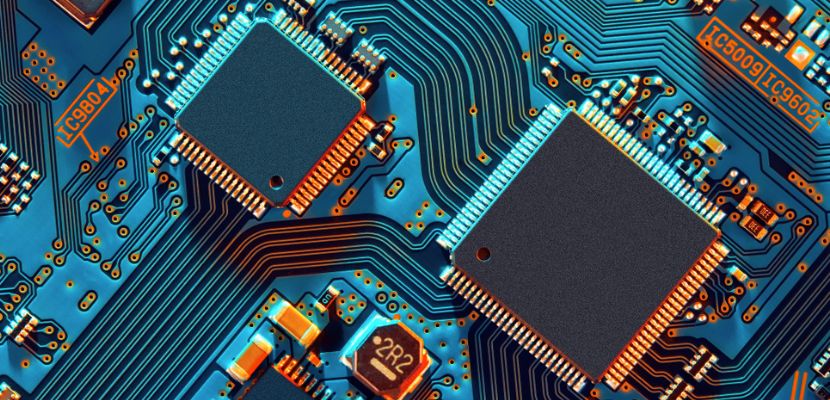Commodity hardware refers to widely available, standardized computing components or devices that are typically mass-produced and cost-effective. This type of hardware includes CPUs, storage devices, memory modules, and network components, often found in personal computers, servers, and consumer electronics.

What Is Commodity Hardware?
Commodity hardware denotes computing components and systems that are widely available and manufactured in large quantities, making them relatively inexpensive compared to specialized or custom-built alternatives. They are standardized and adhere to industry norms, allowing for broad compatibility and easy integration across diverse computing environments.
The mass production of commodity hardware results in economies of scale that lead to cost-effective solutions for individuals and organizations. Their performance and reliability predictability makes them a popular choice for general-purpose computing and data centers. Moreover, commodity hardware enables organizations to efficiently scale their infrastructure by leveraging modular components that can be easily replaced or upgraded, offering flexibility in design and reducing vendor lock-in.
Commodity hardware allows for the deployment of complex computing systems that balance performance with cost, particularly in environments focused on scalability, interoperability, and rapid technological evolution.
Commodity Hardware in PCs
Commodity hardware is crucial in personal computing because it underpins the affordability and accessibility of modern PCs. This standardized, mass-produced hardware drives competition, encouraging manufacturers to innovate while keeping prices reasonable for consumers. As a result, users benefit from reliable and compatible components that are easily upgradable, extending the longevity and adaptability of their computers.
Adherence to industry standards ensures interoperability among different components. For instance, processors, memory modules, and storage devices are designed to work seamlessly together, allowing users to mix and match brands and specifications to suit their needs. Standardization also streamlines manufacturing, enabling quick production of replacement parts, reducing repair costs, and simplifying the assembly of new systems.
Commodity Hardware in Servers
In server environments, where reliability and uptime are paramount, commodity hardware provides a stable foundation because of its predictable performance and widespread availability. Additionally, standardization ensures compatibility and reduces the challenges of integrating various components, simplifying the process of building and maintaining server clusters.
As commodity hardware is mass-produced and readily available, it offers considerable economic benefits. Organizations can build large-scale server farms or data centers at a lower cost compared to proprietary systems. Furthermore, replacing or upgrading components is easier, ensuring that servers can be maintained or expanded efficiently and cost-effectively.
The scalability of commodity hardware enables businesses to add servers to their network seamlessly, adapting to evolving demands. As a result, server environments can be designed with resilience in mind, using redundancy strategies to prevent single points of failure and minimize downtime.
Commodity Hardware Benefits and Downsides
Commodity hardware offers a compelling blend of benefits and downsides, shaping the way businesses and individuals approach their computing needs.
Benefits
Here is a list of benefits that the use of commodity hardware brings:
- Cost-effectiveness. Commodity hardware is mass-produced, leading to economies of scale that reduce production costs. As a result, it is priced more affordably than specialized hardware. This makes it easier for organizations to build extensive computing environments without breaking the bank.
- Scalability. Its standardized design allows for seamless integration and expansion. Organizations can incrementally increase their computing capacity by adding more units without significant architectural changes. This makes commodity hardware ideal for data centers that require rapid growth or dynamic resource management.
- Flexibility and modularity. Components are designed to be compatible with a wide range of systems, making it easy to mix and match different parts to suit specific requirements. This simplifies customization, enabling organizations to optimize configurations for their unique workloads.
- Interoperability. Because commodity hardware adheres to widely accepted standards, it can work smoothly with different software and systems. This standardization reduces compatibility issues and ensures smooth operation across varied environments.
- Reduced vendor lock-in. The standardization and widespread availability of components mean that organizations are not tied to a single vendor. They can switch suppliers easily, reducing reliance on proprietary technologies and maintaining control over their supply chain.
- Reliability through redundancy. Although individual components may not be as robust as specialized counterparts, the affordability allows organizations to use redundancy strategies. By replicating hardware, they can create fault-tolerant systems with reduced downtime and higher reliability.
Downsides
On the other hand, users and organizations should be aware of commodity hardware downsides, such as:
- Quality variability. Due to the mass production of commodity hardware, quality may vary significantly between manufacturers. While many adhere to industry standards, some components can suffer from inconsistent manufacturing processes, leading to higher failure rates.
- Performance limitations. Commodity hardware is designed for broad, general-purpose use and may lack the specialized performance characteristics required for certain high-end applications. This can be particularly problematic for tasks requiring optimized or custom features not supported by standard hardware.
- Limited support. Unlike proprietary systems, which often include dedicated support, commodity hardware is typically backed by generalized customer service. This may result in longer resolution times and less personalized assistance, especially for complex or critical issues.
- Compatibility issues. Despite standardized specifications, integration between different brands or models of commodity hardware can sometimes cause compatibility issues, leading to challenges when trying to achieve seamless interoperability.
- Security vulnerabilities. The widespread use of commodity hardware means potential security flaws can be exploited on a larger scale. Malicious actors can focus their efforts on known vulnerabilities, putting more systems at risk.
- Lack of optimization. While versatile, commodity hardware isn't optimized for specific software or applications. Lack of customization can result in inefficiencies or suboptimal performance in environments that could benefit from specialized configurations.